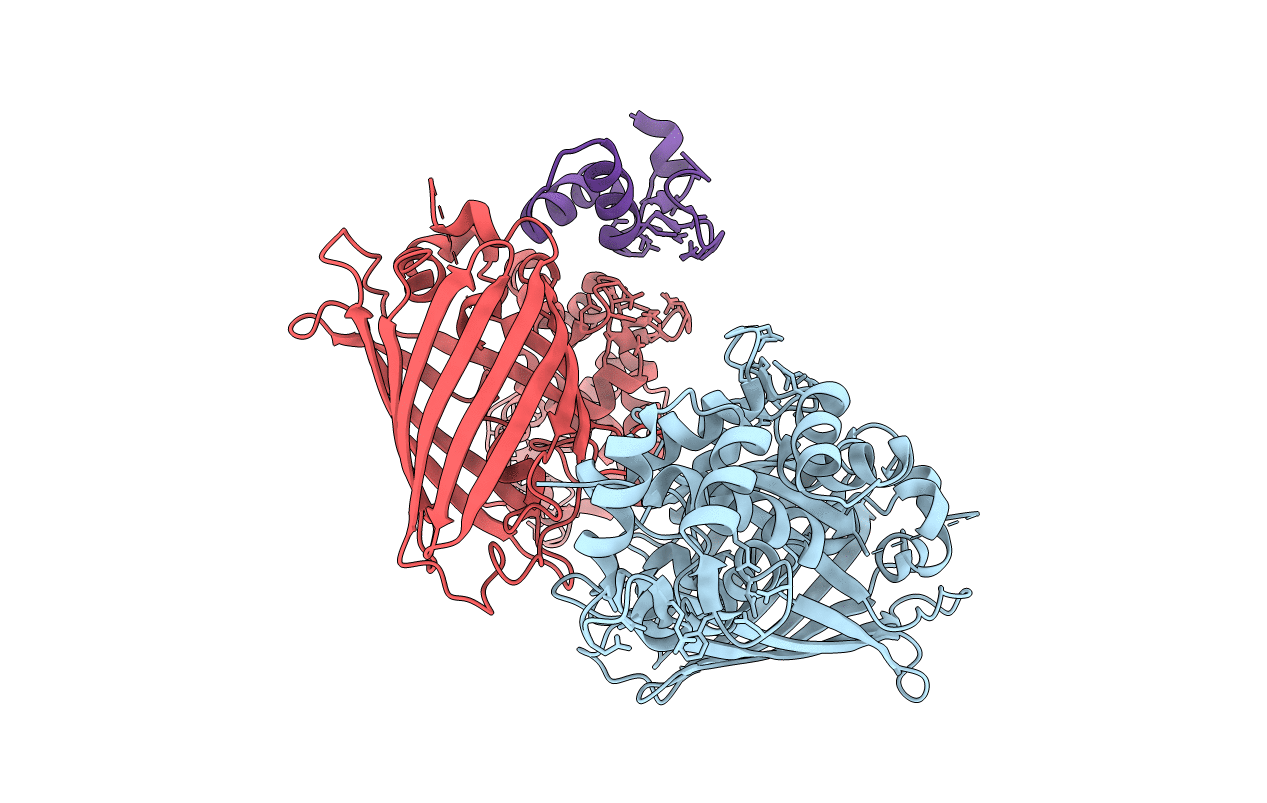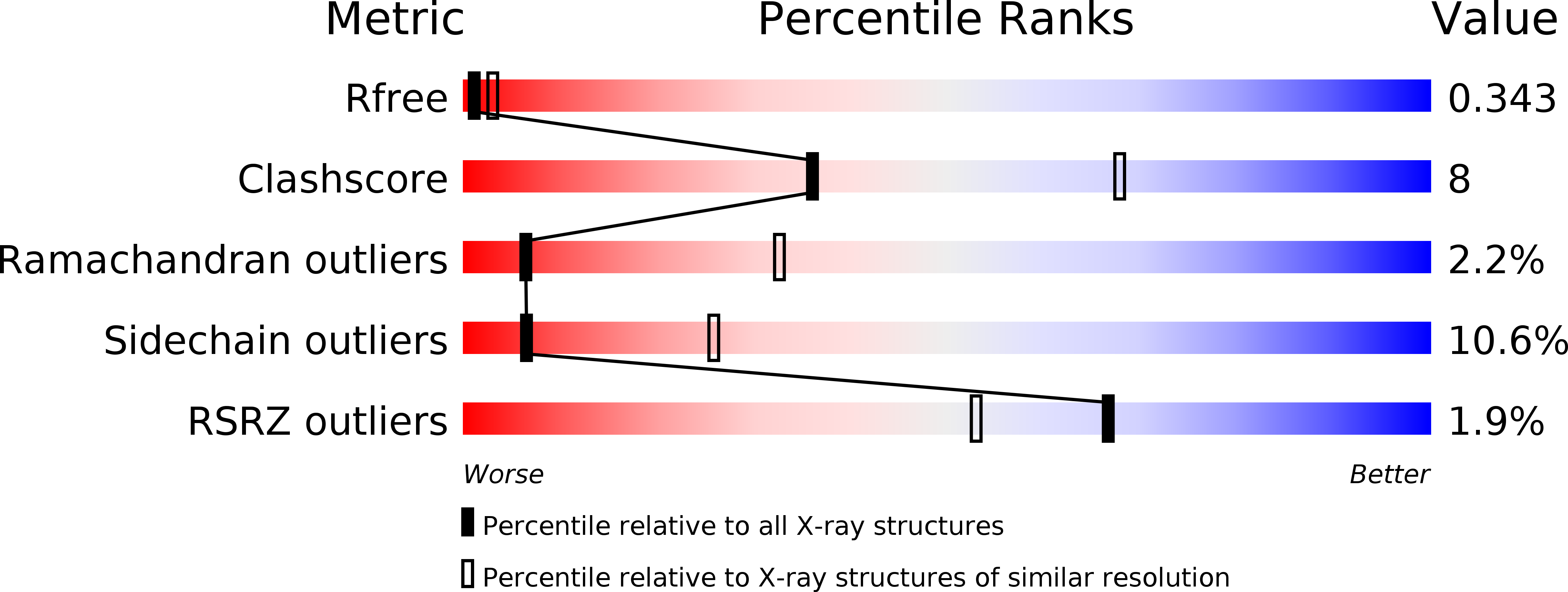
Deposition Date
2020-01-17
Release Date
2020-04-15
Last Version Date
2024-11-13
Entry Detail
PDB ID:
6XU4
Keywords:
Title:
Crystal structure of the genetically-encoded FGCaMP calcium indicator in its calcium-bound state
Biological Source:
Source Organism:
Aspergillus niger (Taxon ID: 5061)
Host Organism:
Method Details:
Experimental Method:
Resolution:
3.18 Å
R-Value Free:
0.34
R-Value Work:
0.27
R-Value Observed:
0.28
Space Group:
P 43 21 2


